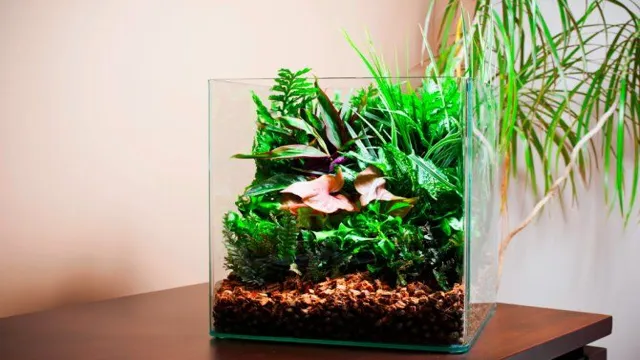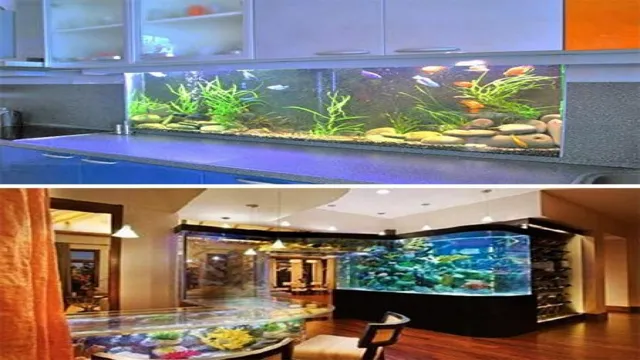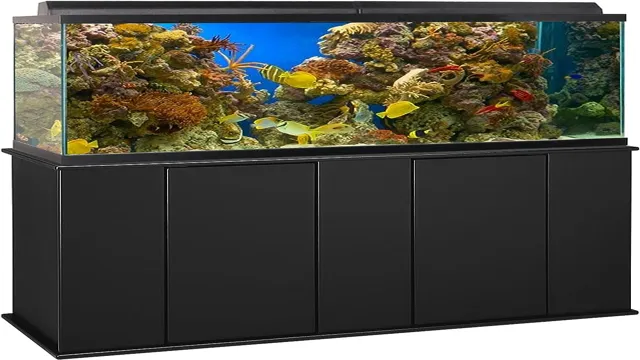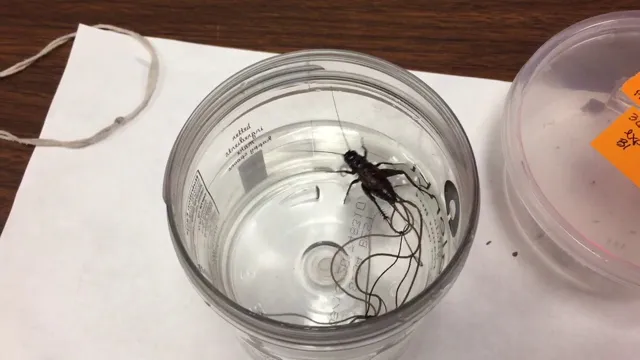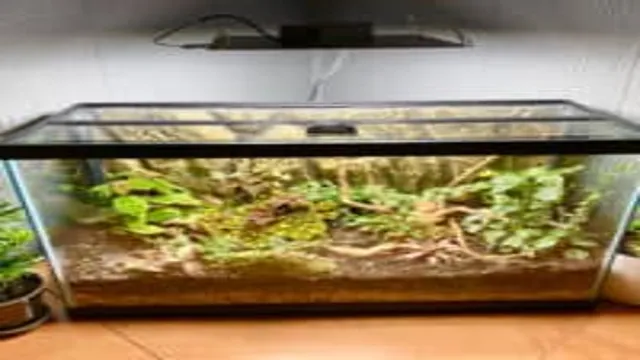Aquarium plants not only enhance the beauty of your fish tank but also create a healthy environment for your aquatic pets. And when it comes to planting aquarium plants, potting them is a preferred method. It is an easy and efficient way to grow plants in your aquarium without disturbing the substrate.
Plus, it gives you the flexibility of choosing different types of plants and moving them around the tank as per your preference. In this blog, we’ll guide you on how to plant aquarium plants in a pot and ensure that they thrive in your underwater garden. So, let’s dive in!
What you need
If you’re interested in creating a beautiful and peaceful atmosphere in your home, consider putting an aquarium with plants in a pot. Not only are they visually appealing, but they also provide numerous benefits such as reducing stress and improving air quality. Before getting started, there are a few things you’ll need.
First, choose a suitable container. A glass or plastic fishbowl, a terrarium, or an enclosed vase can work. Then, choose the plants you wish to use wisely.
You want a variety of plants that are both water and low-light tolerant. Finally, you’ll need some basic supplies such as aquarium gravel or sand, activated carbon, a filtration system, and a light source if your plants need it. After adding the substrate, put in your plants, fill the container with dechlorinated water, and add in your filtration equipment.
With regular maintenance and care, your aquarium plant in a pot will bring beauty and tranquility to your home.
Aquarium plants
Aquarium plants can add a stunning touch to any aquarium, but it’s important to know what you need in order to care for them properly. First, you’ll need to choose the right plants for your aquarium based on the lighting and nutrient levels. Some plants prefer high lighting while others will thrive in low light conditions.
Additionally, the nutrient levels in your tank will play a role in the type of plants you can have. Some plants require high levels of CO2 and fertilizers to grow, while others can thrive with minimal nutrients. Once you have chosen the right plants, you’ll need to make sure you have the right substrate, which can vary depending on the species.
Some plants do well in gravel, while others prefer sand or clay. Finally, you’ll need to ensure that the water temperature and pH levels in your tank are suitable for your plants. While it may seem like a lot to take in, with the right research and preparation, you can create a thriving aquarium that showcases the beauty of these delicate plants.
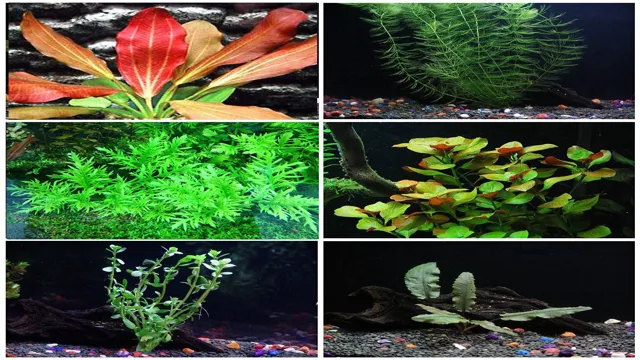
Pot with drainage holes
If you’re an avid gardener, no doubt you’ve heard the phrase “pot with drainage holes” before. But what exactly does that mean, and why is it so important? Simply put, a pot with drainage holes is a container for your plants that allows excess water to flow out freely. This prevents root rot and other water-related issues that can harm your plants.
Without proper drainage, water can get trapped in the bottom of the pot, creating a soggy environment that can cause the roots to suffocate. This is where the importance of a pot with drainage holes comes in. To ensure the health and longevity of your plants, it’s crucial to choose a container with drainage holes and always place a saucer underneath to catch any water that drains out.
By doing so, you’ll create a healthy environment for your plants to thrive in, allowing them to grow strong and beautiful. Don’t overlook the importance of a pot with drainage holes – your plants will thank you for it!
Aquarium soil or substrate
When it comes to setting up your aquarium, choosing the right substrate is crucial for the well-being of your fish and plants. Aquarium soil or substrate is the foundation of aquatic life and provides essential nutrients for aquatic plants to grow and thrive. To start, you need to decide on the type of substrate you want to use.
There are different types, such as gravel, sand, and soil. Aquarium soil is a great option as it contains essential nutrients and minerals that are beneficial for plants. It is also rich in organic matter, which supports the growth of beneficial bacteria.
One important thing to consider when choosing aquarium soil is the pH level. You want to make sure the soil matches the pH level of your water to avoid harmful fluctuations. Also, keep in mind the size of your aquarium and the type of fish you have.
Larger aquariums may require more substrate, while some fish prefer a specific type of substrate. Overall, aquarium soil or substrate is a crucial component of your aquarium setup, and taking the time to choose the right type will ensure a healthy and thriving aquatic environment. (See Also: How to Make a Terrarium from an Aquarium: Step-by-Step Guide)
Aquarium safe glue
When it comes to building and maintaining an aquarium, one of the essential tools you need is aquarium safe glue. This is because regular glue or adhesive can be harmful to the aquatic life in your tank. Aquarium safe glue is specially designed to be non-toxic and safe for underwater use.
But what do you need to look for when choosing aquarium safe glue? Firstly, it must be able to bond various materials used in aquariums such as glass, plastic, and rocks. Secondly, it must dry clear and not affect the water’s chemistry or clarity. Thirdly, it should be easy to apply and work with.
Make sure to read the label and ensure it is indeed aquarium safe glue. By using the right glue, you can ensure the safety of your aquarium inhabitants while keeping everything securely in place.
Preparation
Are you thinking about putting an aquarium plant in a pot? Well, you’ll need to prepare the aquarium plant for the transfer to ensure optimal growth and health. First, choose the right type of pot with good drainage to avoid overwatering. Then, select the proper substrate for your plant’s species – aquatic soil, sand, or gravel.
Before planting, rinse the substrate to remove any unwanted debris or dust. Next, fill the pot with the substrate, making sure the plant’s roots have enough space to grow comfortably. Finally, add water slowly, and let it settle before placing the plant in the pot.
You may also add fertilizers to promote plant growth, but make sure to follow the dosage instructions. With proper preparation, your aquarium plant will thrive in its new pot!
Clean the pot and aquarium plants
Preparing to clean your pot and aquarium plants is an essential aspect of maintaining a clean and healthy aquatic environment. Before you start, you should gather all of the necessary tools and materials. You can use a soft-bristled brush, a sponge, or a scraper to clean the pot or aquarium plants.
You’ll also need a bucket of clean water to rinse the plants thoroughly. It’s important to note that different plants require different cleaning techniques and materials. Some plants may need a milder cleaning solution, while others may require a more robust one.
Therefore, it’s critical to research thoroughly before cleaning your aquarium plants. By doing so, you will ensure that the cleaning process is safe for both the plants and the aquatic animals living in the environment. Overall, with preparation and the right knowledge, cleaning your pot and aquarium plants can be a straightforward and stress-free task!
Add drainage layer at the bottom of the pot
When it comes to preparing a pot for your plants, it’s important to add a drainage layer at the bottom. This layer allows excess water to drain out of the pot and prevents your plant’s roots from becoming waterlogged, which can lead to root rot and other problems. To create this layer, start by adding a few inches of gravel or rocks to the bottom of the pot.
This will create space for the water to collect and drain away from your plant’s roots. Once the drainage layer is in place, you can add soil and your plant. Be sure to choose a pot with drainage holes and avoid overwatering your plant to keep it healthy and thriving.
By taking the time to prepare your pot with a drainage layer, you can give your plant the best possible chance for success.
Planting
If you’re looking to add some greenery to your aquarium, one way to do it is by planting aquarium plants in a pot. Here’s how to get started. You’ll need a few things: a pot with soil, your plants of choice, and some aquarium gravel.
First, rinse the gravel to remove any dust or debris. Next, add a layer of gravel to the bottom of the pot to help with drainage. Then, fill the pot halfway with soil and add your plants.
Be sure to leave enough room between each plant for them to grow. Once you’ve placed your plants, fill the pot to the top with soil and add another layer of gravel on top. This will help keep the soil in place and prevent it from getting stirred up in the aquarium.
Finally, carefully lower the potted plants into the aquarium and position them where you want them. With a little care and patience, you can have a beautiful aquascape in no time! (See Also: How to Clean Stones for Aquarium Use: Easy Step-by-Step Guide)
Add a thin layer of soil or substrate on top of the drainage layer
When it comes to planting, it’s important to add a thin layer of soil or substrate on top of the drainage layer. This layer provides a perfect environment for your plants to grow and thrive. The substrate helps to retain moisture which is essential for the roots of your plants.
It also provides essential nutrients for your plants to take in through its root system. When selecting your soil or substrate, make sure to choose one that is appropriate for your plants and matches the growing conditions of your garden. For example, if you have a garden that has a high level of moisture, consider using a soil that is designed for wet conditions.
Similarly, if you have a garden with a lot of sun exposure, choose a substrate that helps to provide shade and protection for your plants. With these simple steps, you can create the perfect environment for your plants to grow and thrive, ensuring a beautiful and healthy garden all year round.
Start planting aquarium plants
If you’re looking to add some greenery to your aquarium, planting freshwater aquarium plants can be a wonderful way to make it look more natural. However, before you start planting, there are some important things to consider. Firstly, you need to make sure you choose the right type of plants for your aquarium.
Some species prefer different light and water conditions, while others may require additional nutrients or CO2 injections. Secondly, it’s essential to properly prepare your aquarium for planting. You should clean the substrate, remove any debris, and place the plants in the right position to ensure they get enough light and nutrients.
Finally, you can start planting your aquarium plants. Make sure you plant them deep enough in the substrate, and don’t overcrowd the aquarium. With the right care and attention, your planted aquarium can thrive and become a beautiful addition to your home.
So why not give it a try and see the fruits of your labor?
Anchor plants with glue if necessary
When it comes to planting your precious flora, sometimes the wind can be quite a nuisance. If you find yourself struggling to keep your plants upright, don’t worry – there’s a simple solution. Anchor plants with glue if necessary! Now, we’re not talking about using just any type of glue – you need to get your hands on a plant glue that is specifically designed for this purpose.
This type of glue is safe for your plants, waterproof, and won’t compromise the integrity of the soil. Simply apply a small amount to the bottom of your plant before planting it, and voila! Your plant will be secure and able to withstand even the strongest gusts of wind. This technique is especially helpful for delicate plants that are prone to falling over, or for those growing in areas with frequent high winds.
By using plant glue to secure your greenery, you can rest easy knowing that your garden will stay beautiful and secure no matter what Mother Nature throws your way.
Maintenance
Are you looking to add some aquatic greenery to your home aquarium? One popular way to do so is by putting aquarium plants in pots. First, choose a plant that is compatible with your water parameters and lighting conditions. Then, select a pot that is large enough to accommodate the roots but not so large that it takes up too much space in the aquarium.
Rinse the pot with aquarium-safe water and fill it with a high-quality substrate designed for aquatic plants. Carefully remove the plant from its original container and gently separate any tangled roots. Place the plant in the pot and top off with more substrate, just enough to cover the roots.
Gently press the substrate down around the base of the plant, being careful not to damage the delicate roots. Finally, carefully place the pot in the aquarium, making sure it is stable and won’t tip over. With proper care, your potted aquarium plants can thrive and add a beautiful, natural touch to your aquatic environment.
Keep the pot well-watered and maintain humidity
When it comes to maintaining your plant, it’s important to keep the pot well-watered and maintain humidity. These two factors are crucial for the growth and health of your plant. First and foremost, watering is essential.
The frequency of watering depends on the plant species, but it’s important not to overwater. Overwatering can cause root rot, which ultimately leads to plant death. In addition to watering, maintaining humidity around the plant is important, especially since many indoor environments can be dry. (See Also: How to Clean Aquarium Cover: Simple and Effective Methods)
A simple way to increase humidity is by placing a tray of water near the plant or using a humidifier. High humidity helps the plant retain moisture and keeps the leaves from drying out. Overall, keeping the pot well-watered and maintaining humidity is essential for the health and longevity of your plant, so stay vigilant and consistent with your plant’s care routine.
Trim dead leaves or damaged parts of the plants
Maintenance is crucial for the well-being of your plants, and one of the most important things you can do is trim dead leaves or damaged parts of the plant. This ensures that the plant is using its energy to grow healthy, vibrant leaves and flowers, rather than expending energy on parts that are unlikely to recover. If a leaf or stem is damaged, it’s best to remove it before it becomes a breeding ground for bacteria or disease.
Trimming can also help to keep your plant looking neat and tidy, and prevent the spread of any problems to other plants in the vicinity. So grab your pruning shears and get to work – your plants will thank you for it!
Conclusion: Enjoy your beautiful, thriving aquarium plant pot!
Putting an aquarium plant in a pot may seem like an odd concept to some, but it’s actually quite simple. First, you’ll need to select a plant that does well in aquatic environments. Then, find a pot that has good drainage and is large enough to accommodate the plant’s root system.
Fill the pot with a mix of aquatic soil and gravel before carefully placing the plant in the center. Finally, add water and watch your new aquatic masterpiece come to life! Not only is this a great way to add some unique greenery to your home, but it also gives your fish a little extra something to enjoy in their underwater world. So go ahead, give it a try and dive into the world of aquatic gardening!”
FAQs
Can I use regular soil for my aquarium plant pot?
No, it is recommended to use substrate specifically designed for aquarium plants, as regular soil can contain harmful chemicals and lack necessary nutrients.
How deep should the aquarium plant pot be?
The pot should be deep enough to cover the plant roots, typically around 2-3 inches deep.
Should I add fertilizer to my aquarium plant pot?
Yes, adding fertilizer can help provide necessary nutrients for the plant to grow. It is important to use fertilizer specifically designed for aquarium plants, as regular fertilizers can harm aquatic life.
Can I add fish to the aquarium plant pot?
While it may be tempting, it is not recommended to add fish to a plant pot as they can disturb the plant roots and potentially harm the fish. It is best to keep them in separate tanks.
Can I use tap water to fill my aquarium plant pot?
It is not recommended to use tap water as it may contain harmful chemicals and minerals that can harm aquatic life. It is best to use treated aquarium water or distilled water.
How often should I change the water in my aquarium plant pot?
It is recommended to change the water in the plant pot every 2-4 weeks to prevent the build-up of harmful chemicals and replenish necessary nutrients.
Can I mix different types of aquarium plants in one pot?
Yes, it is possible to mix different types of plants in one pot as long as they have similar water and lighting requirements. It is important to research the plants beforehand and ensure compatibility.

